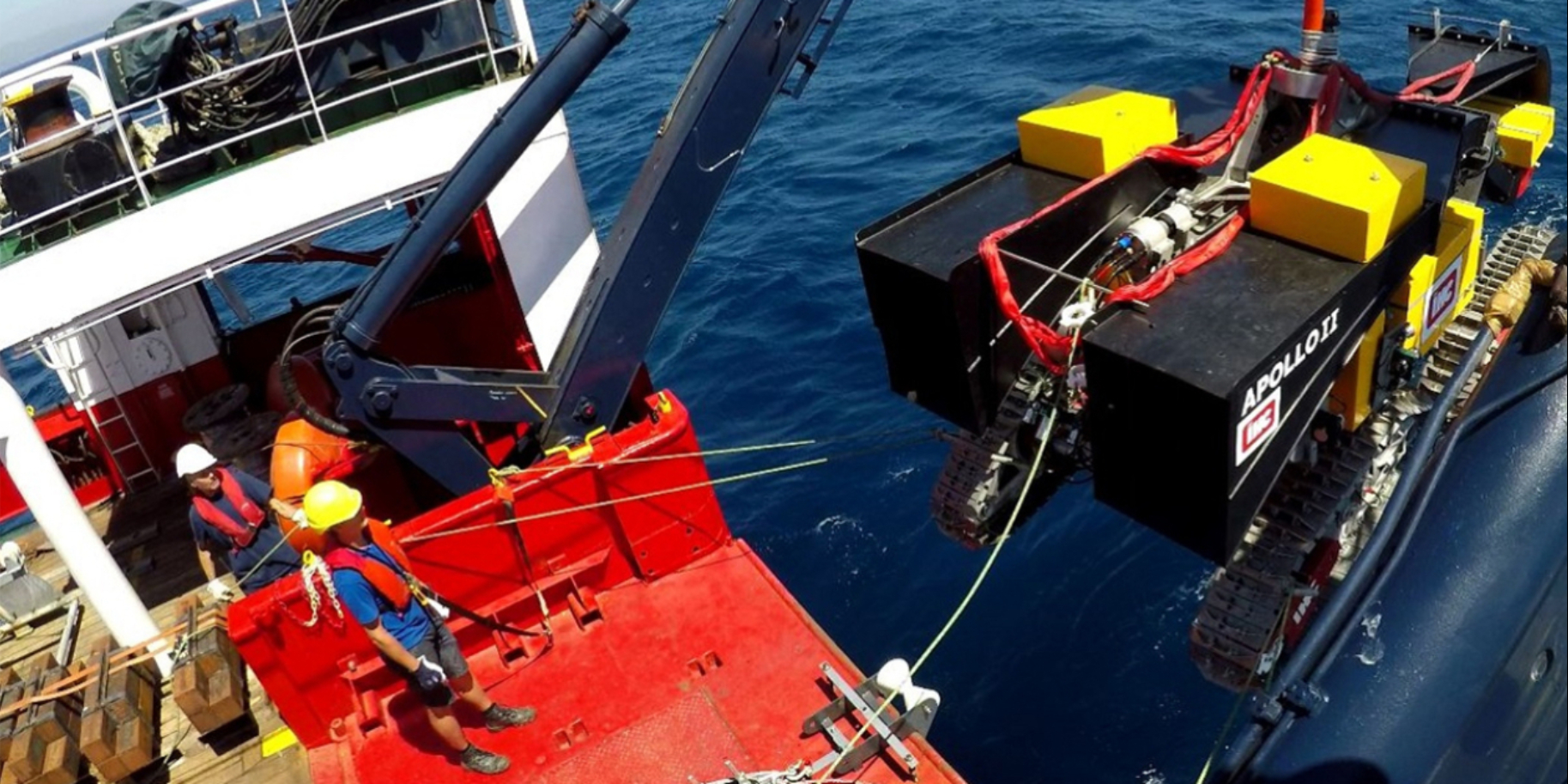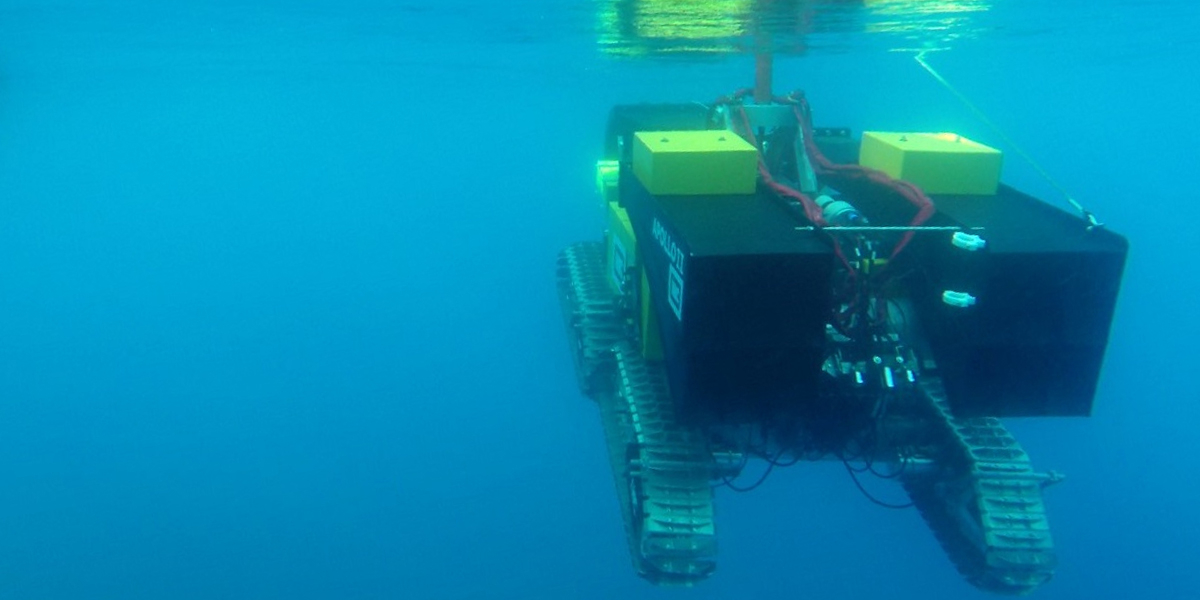Importance of science-based data in an exploration of deep-sea mining

As the demand for minerals is soaring and reserves on land are getting scarce, the search for alternative options to source raw materials is expanding to new terrains. The Blue Nodules project focused on the development of technology for mining of mineral deposits from the deep ocean floor, such as in the Clarion Clipperton Zone in the Pacific. Five kilometres below the surface, at the bottom of the ocean, lie billions of tonnes of polymetallic nodules. These potato-sized rocks contain nickel, cobalt, copper and manganese, critical materials for a clean energy future. The challenge: developing a seafloor mining tool and flow-process that enables deep-sea mining with an impact on the environment that is as low as possible.
Trials in a marine environment
NIOZ scientists were involved in the impact assessment on the seabed environment. First trials with a prototype test mining vehicle were held offshore Spain in 2018 and 2019. NIOZ expert on deep-sea mining, Henko de Stigter: ‘It was a good opportunity to see a mining vehicle in action in a marine environment from very nearby. The seabed conditions at the test site, with soft, muddy sediment and weak bottom currents, were somewhat comparable to those we find in the deep-sea.’

Plumes threaten recolonization of fauna after mining
The field trials provided the researchers with valuable data on the disturbance of the seabed and the size and extent of sediment plumes generated by the mining process. A remotely operated vehicle recorded video and sonar imagery of the traces left on the seabed by the mining vehicle. The sediment was compressed only by a few centimetres under the caterpillar tracks. According to De Stigter, compaction doesn’t seem to pose the biggest problem. His worries lie with the plumes that are produced in the mining process. ‘The harvesting vehicle that collects the nodules spits out plumes of sediment at the back. Under influence of bottom currents this sediment is spread out over the wide surroundings of the actual mining site and eventually settles back to cover the affected seabed. This cover of very watery and unstable sediment will be centimetres or locally even tens of centimetres thick and makes it hard for fauna to recolonize the seabed.’
The scientific research supports engineers to design a prototype vehicle and minimize a range of environmental issues. It is considered an important, but definitely not final, step in the uncharted terrain of deep-sea mining. De Stigter underlines that there is still a lot of work to be done. In a follow-up project he hopes to collect more solid scientific data and observations, and aid in the development of properly validated computer models that can better predict the behaviour and spread of the plumes. De Stigter: ‘Should deep-sea mining become a full-blown industry in the future, we hope that the results of Blue Nodules contribute to keeping its impacts on the deep-sea environment as low as possible.’
Blue Nodules project film
The projects’ major findings, technical innovations and recommendations are now available in video format.